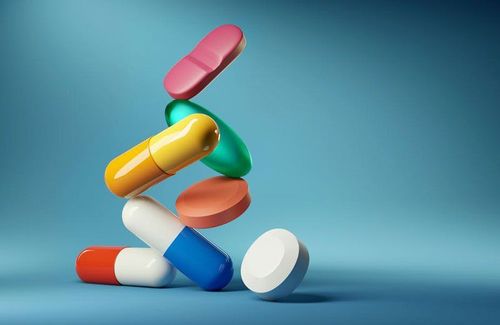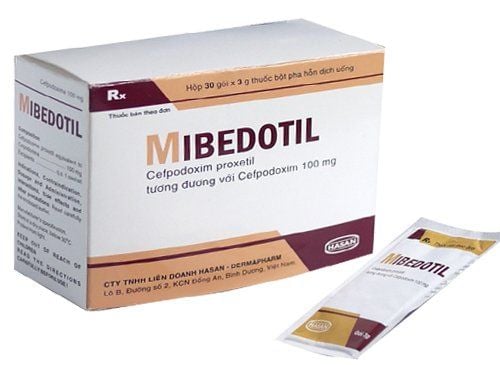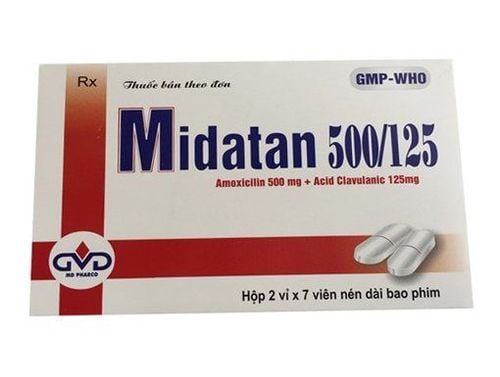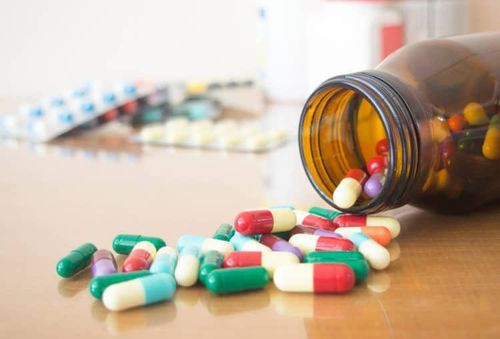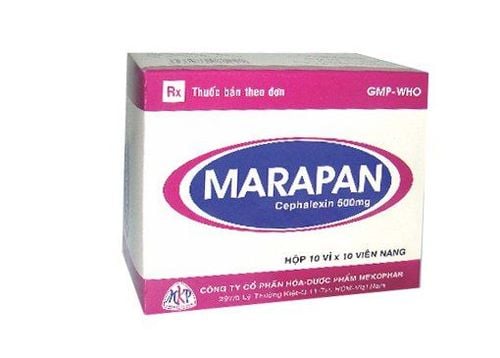This is an automatically translated article.
Ixifast is classified as an antibiotic and anti-parasitic drug with the main active ingredient being Cefixime. Ixifast is available in the form of a film-coated hard capsule. Uses, doses and side effects of Ixifast will be found in the article below.
1. What is Ixifast?
Ixifast is a specialized antibiotic used in the treatment of infections such as otitis media, pharyngitis, bronchitis. With the main active ingredient is Cefixime, Ixifast is classified as a 3rd generation Cephalosporin antibiotic. The dosage form of Ixifast is a hard capsule, so it is indicated for oral use.
With each Ixifast tablet, the Cefixime content is prepared as 200mg, a box includes 2 blisters, each blister contains 4-10 tablets depending on the manufacturer.
2. Uses of Ixifast
The use of Ixifast is to treat typical infections in the acute and chronic respiratory tract. In addition, the drug is also used in the treatment of urinary and genital infections, skin and soft tissue infections.
Cefixime itself is a 3rd generation Cephalosporin antibiotic, so the mechanism of killing bacteria of Ixifast is similar to that of other Cephalosporins. Specifically, the active ingredient Cefixime will bind to the target proteins of bacteria, thereby inhibiting the synthesis of mucopeptides in the bacterial cell wall.
As an improved antibiotic, Cefixime is highly stable to beta-lactamase hydrolysis. According to clinical experiments, Cefixim is more stable to beta-lactamase than cefaclor, cefoxitin, cephradin, cephalexin.
The antibacterial spectrum of Ixifast is assessed to be very broad when the drug can act both in vitro and clinically with many different Gram-negative and positive bacteria.
Gram-positive bacteria: Streptococcus pyogenes, Streptococcus pneumonia, Streptococcus agalactiae (clinical efficacy has not been proven much) -lactamase), Moraxella catarrhalis, Escherichia coli, Neisseria gonorrhoeae (secreting or not secreting penicilinase), Proteus mirabilis, Proteus vulgaris, Klebsiella pneumoniae, Klebsiella oxytoca, Providencia spp., Salmonella spp., Shigella spp, Pasteurella Citrobacterus, bacter multocida diversus, Serratia marcescens
3. Pharmacokinetics of the drug Ixifast
Ixifast is absorbed orally, but only 30%-50% of the dose is absorbed after a single dose of Ixifast. When the drug is taken with a meal, the absorption of the drug may be delayed. The drug binding to proteins is quite low as only 65% of the oral dose is bound to plasma proteins.
Regarding elimination, only 20% of the oral dose of Ixifast is excreted in the urine, 60% is excreted without the kidneys, according to studies showing that part of the drug is excreted in the bile in the feces, and not excluded by hemodialysis.
4. Indications for use of Ixifast
Ixifast is an antibiotic indicated for use in the treatment of moderate and mild infections
Uncomplicated urinary tract infections (caused by E.Coli, Proteus mirabilis, Citrobacter spp, Klebsiella spp,... caused) . Nephritis - pyelonephritis . Acute otitis media caused by Haemophylus influenzae, Moraxella catarrhalis. Pharyngitis and tonsillitis. Acute and chronic bronchitis. Mild and moderate community-acquired pneumonia.
5. Contraindications to the use of Ixifast
According to the recommendations from the drug manufacturer and the doctor, the drug Ixifast will be contraindicated in the following cases:
Hypersensitivity to Cefixim or other Cephalosporin antibiotic groups; The patient has a history of anaphylaxis to penicillin.
6. Dosage and how to use the drug Ixifast
How to use: Ixifast is taken orally, well absorbed from the gastrointestinal tract in the form of hard capsules.
Dosage:
Treatment of infections in adults and children over 12 years old: Use from 50-100mg / time, 2 times a day, the dose can be used in severe infections is 200mg / time , drink twice a day. Treatment of urinary tract infections caused by gonorrhea: 400mg orally once. For patients with renal impairment: It is necessary to reduce the dose as prescribed by the doctor.
7. Side effects of the drug Ixifast
The side effects of Ixifast are announced to be similar to those of the Cephalosporin antibiotic groups. Most of the side effects of antibiotics containing Cefixime are mild, only 5% of patients need to stop taking the drug containing Cefixime when experiencing side effects.
Common side effects:
Loose stools (diarrhea), pseudomembranous colitis. In systemic symptoms, may appear anaphylaxis, angioedema, erythema multiforme, Stevens-Johnson syndrome. Common serious side effects may be thrombocytopenia, leukopenia, decreased total volume and hematocrit, hepatitis causing jaundice. In the kidney, the common side effects may be acute renal failure, increased serum protein nitrogen, increased creatinine concentration in the short term. Rare side effects:
Increased prothrombin time prolongs blood clotting. Serious systemic side effects may cause convulsions. When convulsions occur while taking cefixime-containing drugs, stop the drug immediately and take anticonvulsants.
8. Note when using the drug Ixifast
Do not use Ixifast in subjects such as pregnant and lactating mothers, children under 6 months of age. Store Ixifast in a cool place, away from sunlight and out of reach of children. Ixifast is an antibiotic belonging to the 3rd generation Cephalosporin group, indicated in the treatment of moderate and mild infections. Ixifast is a prescription antibiotic, patients are not allowed to use it on their own, but should be prescribed and prescribed by a specialist.




